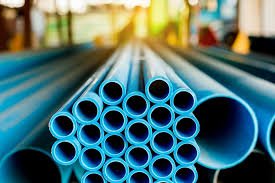
Planning a plumbing system for a new home is one of the most important steps in the construction process. It impacts everything from daily convenience to long-term durability. Mistakes made during pipe installation can lead to serious water damage, higher maintenance costs, and reduced efficiency. This guide walks you through important tips for proper pipe installation, especially tailored for modern homes, while ensuring long-term reliability and performance.
1. Begin with a Plumbing Plan
Before laying even a single pipe, having a complete plumbing blueprint is essential. This includes the layout of supply and drainage systems, locations of all fixtures, and the flow direction. A well-prepared plan ensures proper alignment of water pressure and drainage. Many homeowners ignore this initial phase and end up with leaks, low pressure, or poor drainage flow.
2. Choose the Right Piping Material
The material you select determines the lifespan, performance, and cost of your plumbing system. PVC and CPVC are common for drainage and hot water supply, while PEX offers flexibility and resistance to freezing. Copper, though more expensive, is reliable and long-lasting. The key is to match the material with water pressure, temperature, and usage needs of each area of your home.
Avoid selecting piping solely based on price. A poor-quality pipe might save money initially, but will cost you in repairs later.
3. Maintain Proper Slopes and Angles
When installing drainage pipes, it’s crucial to ensure the correct slope. A too-flat slope may cause water to stagnate, while a steep slope can result in solids being left behind. Ideally, horizontal pipes should have a slope of at least 1/4 inch per foot for optimal flow.
Also, sharp turns should be avoided in both supply and waste lines. These can cause blockages or pressure loss. Gentle curves and appropriate fittings are always recommended.
4. Secure Pipes Correctly
All pipes must be properly anchored to avoid vibration and movement. Loose or unsupported pipes often lead to wear over time, especially with hot water systems where expansion and contraction are regular. Secure them with clamps, straps, or brackets every few feet, depending on the type and diameter of the pipe.
Failing to do so may cause knocking noises, known as “water hammer,” or even bursting in worst cases.
5. Keep Pipes Away from Hazard Zones
Pipes should be routed away from areas that expose them to physical damage—like under doorways, through footpaths, or in high-traffic wall zones. Additionally, avoid placing water lines near electrical systems, unless there’s proper insulation and separation in place.
Planning the layout with protection zones ensures longevity and safety.
6. Test the System Before Finishing Walls
Always pressure-test both supply and drainage systems before sealing walls or floors. Detecting and fixing a leak is far easier when everything is exposed. Skipping this step can lead to costly rework once the home is finished and occupied.
Don’t rely solely on visual inspection. Use pressure gauges and color dye tests for accurate detection.
7. Consider Future Maintenance Access
While pipes might be hidden in walls or floors, it’s essential to leave enough access to cleanouts, joints, and valves. Build-in access panels in bathrooms, kitchens, and utility areas. This small step can save hours and avoid expensive repairs in the future.
Also, mark pipe locations clearly in your plumbing layout to assist in future modifications.
8. Insulate Pipes in Critical Areas
Insulation reduces heat loss in hot water pipes and protects cold water lines from condensation and freezing. Especially in regions with extreme temperatures, uninsulated pipes are a major vulnerability. Foam sleeves and fiberglass wraps are budget-friendly solutions that improve system efficiency.
In basements and attics, insulation is not optional—it’s a necessity.
9. Follow Local Plumbing Codes
Every region has specific plumbing codes that outline best practices and mandatory standards. These may include pipe sizes, backflow prevention, venting systems, and more. Ignoring these codes may result in fines, delays, or having to tear out work already done.
Hiring a certified plumber familiar with local requirements is always a wise step.
10. Avoid DIY Shortcuts
While some home builders may try installing parts of the plumbing system themselves to save costs, it’s risky. Improper fittings, missed joints, or use of incompatible materials often result in expensive repairs. It’s better to involve professionals at each stage of installation.
Connection to Plasco Pipes
One of the easiest ways to ensure a smooth installation is by choosing pipes from a brand known for consistent quality and durability. Plasco Pipes has become a trusted name in residential pipe systems by offering piping products that meet strict quality standards, helping both professionals and homeowners install with confidence.

